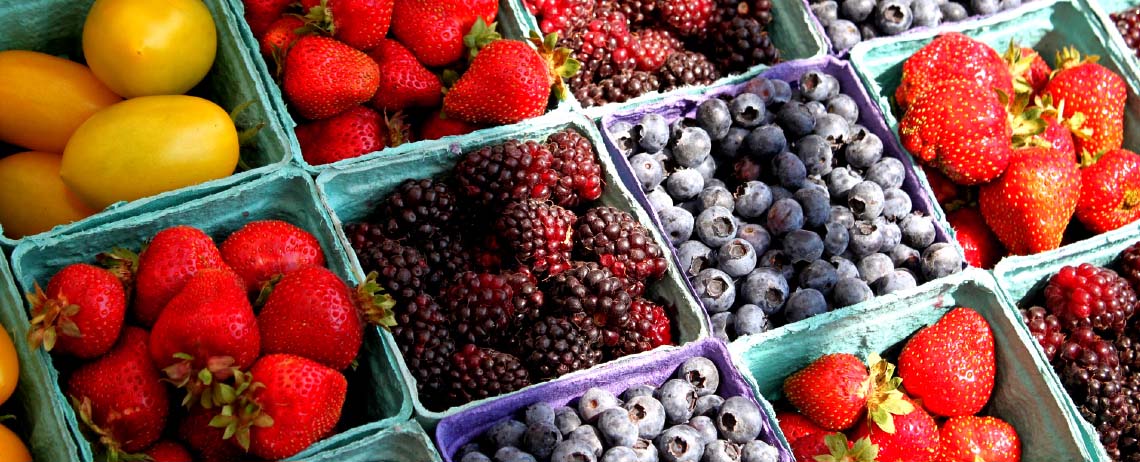Top 6 Biggest Advancements In Food Safety In The Last Decade
Industry Trends | By | 1 Nov 2016 | 3 minute read

Every day millions of food products are created, distributed and served safely across the world and without a major food safety incident. National standards and health guidelines are consistently evolving to keep our food of good quality. Foodborne illnesses however are still prevalent today. Luckily, food engineers are experimenting with new technologies. To help eliminate these threats, so we stay safe and healthy.
1. Irradiating produce
Food engineering researchers at Texas A&M are investigating a way to ensure the safety of fresh produce. Through a process called irradiation, an electron beam kills disease-causing organisms. Irradiating vegetables can reach bacteria inside them, not just what’s on the surface. It doesn’t affect the produce or make it unsafe to eat either. The CDC rates this method fairly high. Going as far to say it holds great potential for preventing many foodborne diseases. Without harming the nutritional value or making it dangerous to eat.
The electron beams high-energy produced by an electric gun. This technology is in fact 100 years old. It’s currently used by food processors in 50 countries to make their food safer. However, because of a lack of education on radiation and consumer fear. This method is not commonly used in the United States.
E-beam is safer than chemicals
What we sometimes forget is that almost all fresh fruits and vegetables sold commercially in the US are sprayed with chemicals. Some of these are really harmful to humans. The chemicals can rear their head when vegetables are cooked at a high temperature. Chemicals just treat the surface of the product, whereas electronic beams eliminate bacteria all the way through. Texas A&M researchers are even exploring how irradiation can increase nutritional value, particularly fruits that are high in antioxidants, like blueberries. In addition, this method can slow down ripening and spoilage to extend shelf life.
2. Active plastic wrap
The plastic wrapped around the fresh produce can have harmful effects too. You might think it provides a basic barrier between your food and contamination, but it’s not always very effective. Researchers are studying and improving the sheet plastic that goes around our food. The Texas A&M researchers are looking at including natural enzymes and extracts like thyme, rosemary, cinnamon, and garlic in the plastic wrap. As well as combining gases or a low dose of irradiation inside the produce bags. This process will make the plastic wrap ‘active’ by maintaining the quality and safety of the spinach.
3. Cryogenic freezing
Frozen food is one of the largest sectors in the food industry. It’s a convenient and healthy alternative to fresh produce as our lives get busier and we’re unable to get to the store as frequently. Cryogenic freezing uses the direct application of liquid nitrogen and carbon dioxide onto food. This process is fast, leaves a smaller footprint and is less costly than other freezing systems.
4. High pressure processing
High pressure processing occurs when products are already sealed in their final package. They are then subjected to a high level of isostatic pressure in water. This is a particularly useful method as it’s non-thermal. Therefore it doesn’t destroy the food’s vitamins or flavour. In addition, it maintains the produce quality but destroys nasty bacteria like Listeria, or Salmonella. After Chipotle’s food safety issues, they’ve taken considerable steps to eliminate food safety danger. By implementing high pressure processing, they can make harmful bacteria inactive through refrigeration.
5. Sous vide (under vacuum)
This process involves food being placed in vacuum-sealed packages and heated at low temperatures. It’s a method of cooking employed by chefs that results in more tender ingredients. In addition, it’s a great way to control harmful bacteria. This method is ideal for meat and poultry products. Chipotle employs this method on steak.
6. Drying food
Fruits and vegetables are important sources of nutrients, and keeping them fresh is the best way to maintain their nutritional value. This can, however, be difficult to do throughout the distribution chain. Drying is a suitable alternative to increase shelf-life and promote food security. In countries like India where there are not many safe handling facilities, drying food is essential. There are a number of ways to dry out fruit and vegetables whilst maintaining their quality. Major restaurant chains are still experimenting with processes such as osmotic dehydration (a partial dehydration); the vacuum method which causes a reduction in pressure; heat pump drying and more.
Technology means safer food
Technology and better food safety methods go hand-in-hand. The Food Safety Modernization Act (FSMA) aims to prevent foodborne illnesses, however food safety success will require more than regulation. With policy makers and researchers working together, the industry can educate today’s population on what makes food safer. With a global population of 7 billion and growing – the industry has an obligation to keep investing in food safety research, ensuring consumers can eat and shop safely.
Important Notice
The information contained in this article is general in nature and you should consider whether the information is appropriate to your specific needs. Legal and other matters referred to in this article are based on our interpretation of laws existing at the time and should not be relied on in place of professional advice. We are not responsible for the content of any site owned by a third party that may be linked to this article. SafetyCulture disclaims all liability (except for any liability which by law cannot be excluded) for any error, inaccuracy, or omission from the information contained in this article, any site linked to this article, and any loss or damage suffered by any person directly or indirectly through relying on this information.





